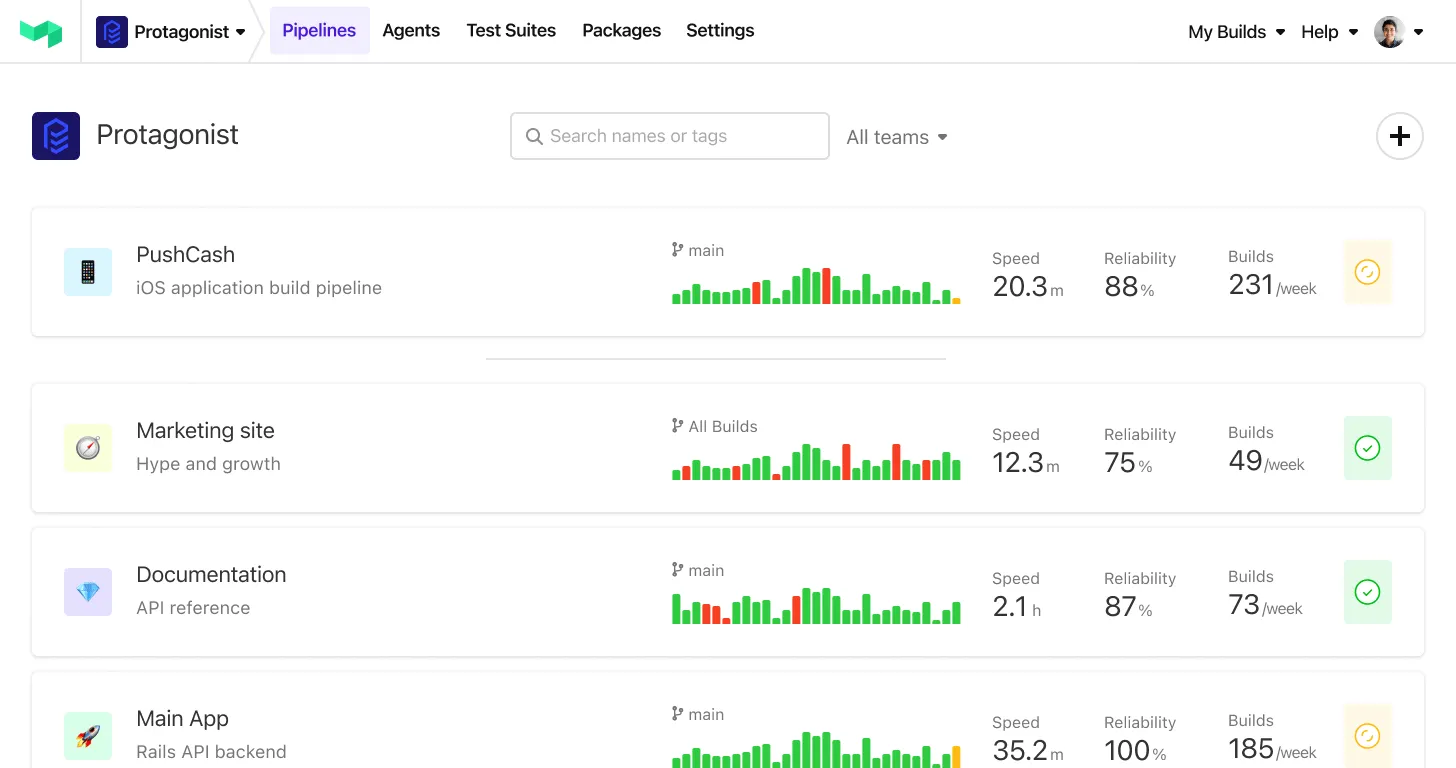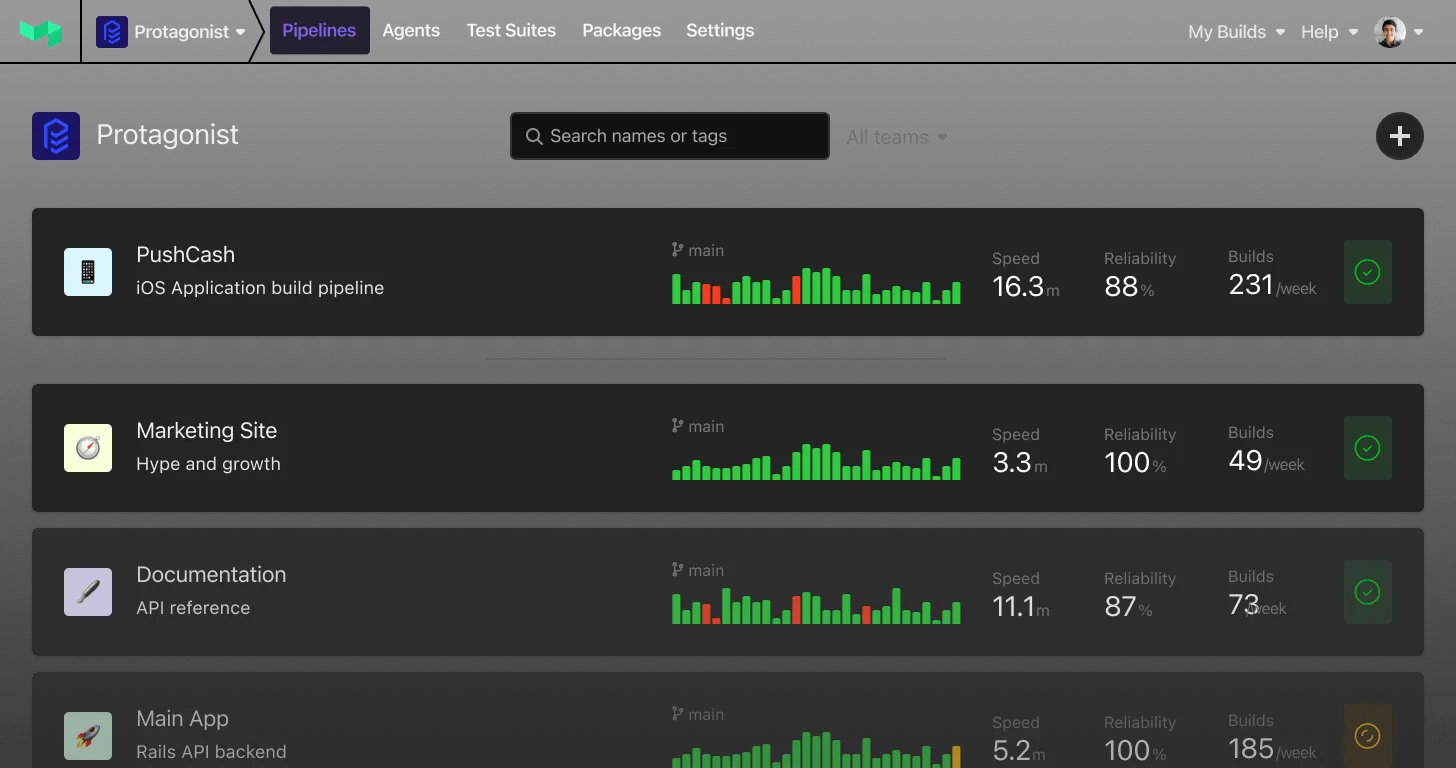Team management in suite settings
We've introduced team management to the suite settings page.
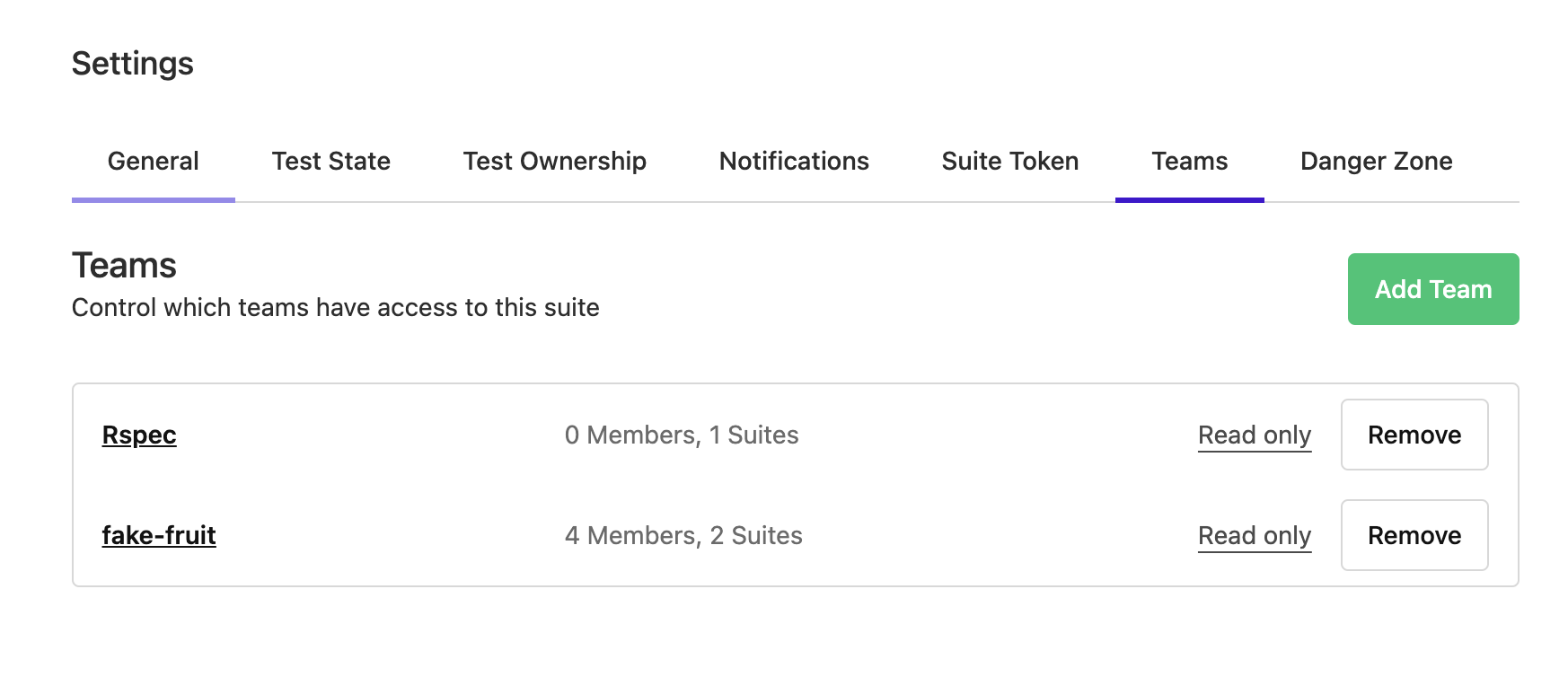
Users with permission to edit the suite can:
- Add & Remove Teams: Easily control which teams have access to the test suite.
- Edit Permissions: Adjust team permissions directly from the Teams page.
- Team Insights: View the total number of users in each team and how many test suites each team can access.
- Quick Navigation: Click on a team to navigate directly to its details page for managing team members.
This feature streamlines team access management, allowing users to configure permissions and team memberships efficiently within their test suite environment.
Katie
Date filtering on flaky test page
We've added a date filter to the flaky tests page, allowing users to refine the list of flaky tests based on set date ranges. Users can now filter flaky test results from the last hour up to the last 28 days.
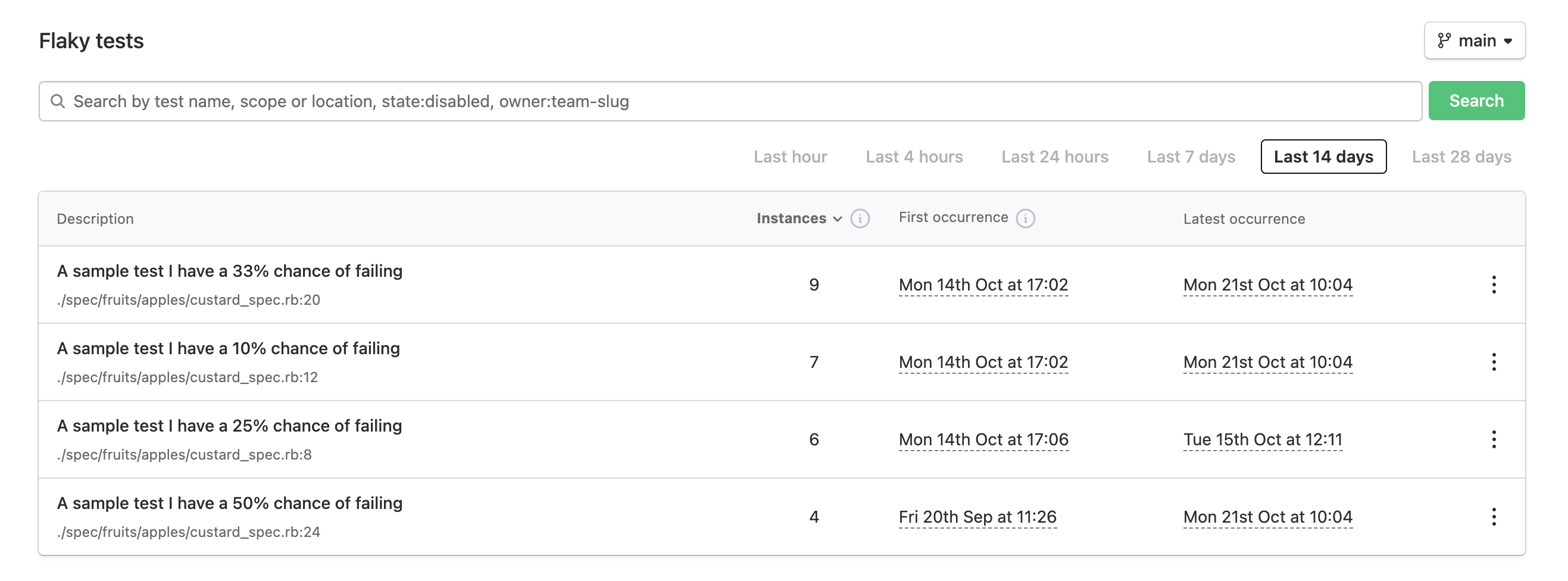
This enhancement provides greater insight into flaky tests, enabling users to identify recent test instability or track longer-term trends in test flakiness. Enjoy!
Katie
Dark mode
We’re excited to release dark mode for all customers!
In your user menu you can set Buildkite to display in light or dark mode, or adapt to your system theme:

Thanks to all the customers whose input shaped this feature. Note that dark mode is experimental and you may encounter issues. Please reach out with any feedback or issues you notice, thanks!
Brett
IPv6 Support for the Buildkite Agent
We will be enabling IPv6 support for the agent.buildkite.com domain used by the Buildkite Agent on 2024-11-20. In dual-stack¹ environments, this may mean that agents start connecting from IPv6 addresses where they previously used only IPv4.
If you:
- Have agents running on a dual-stack network, AND
- Use Cluster tokens that restrict agent connection by IP address,
you should ensure that your tokens' IP allowlists include your agents' IPv6 address range(s).
¹ An environment where both IPv4 and IPv6 may be used on the public Internet.
Ellis
Suite repository URL validation
We have updated the validation for the repository URL field on the Suite Settings page. Previously, users could only set GitHub or GitLab URLs. With this update, you can now enter any valid URL as the repository URL.
This provides more flexibility when setting your repository URL, allowing integration with other platforms beyond GitHub and GitLab.
No action is required on your part to benefit from this update. Enjoy the enhanced flexibility!
Katie
Tests tab in job UI
You can now see your Test Analytics failures directly within the build job.

The new Tests tab lists all test executions that have failed in the current job, giving you a quick overview of failures and their summaries.
Meghan
New execution drawer
Navigating to an execution now opens a drawer within the Test's page, enabling you quick access to execution details without leaving the context of the test. This improves workflow by making it easier to explore test details and debug faster.
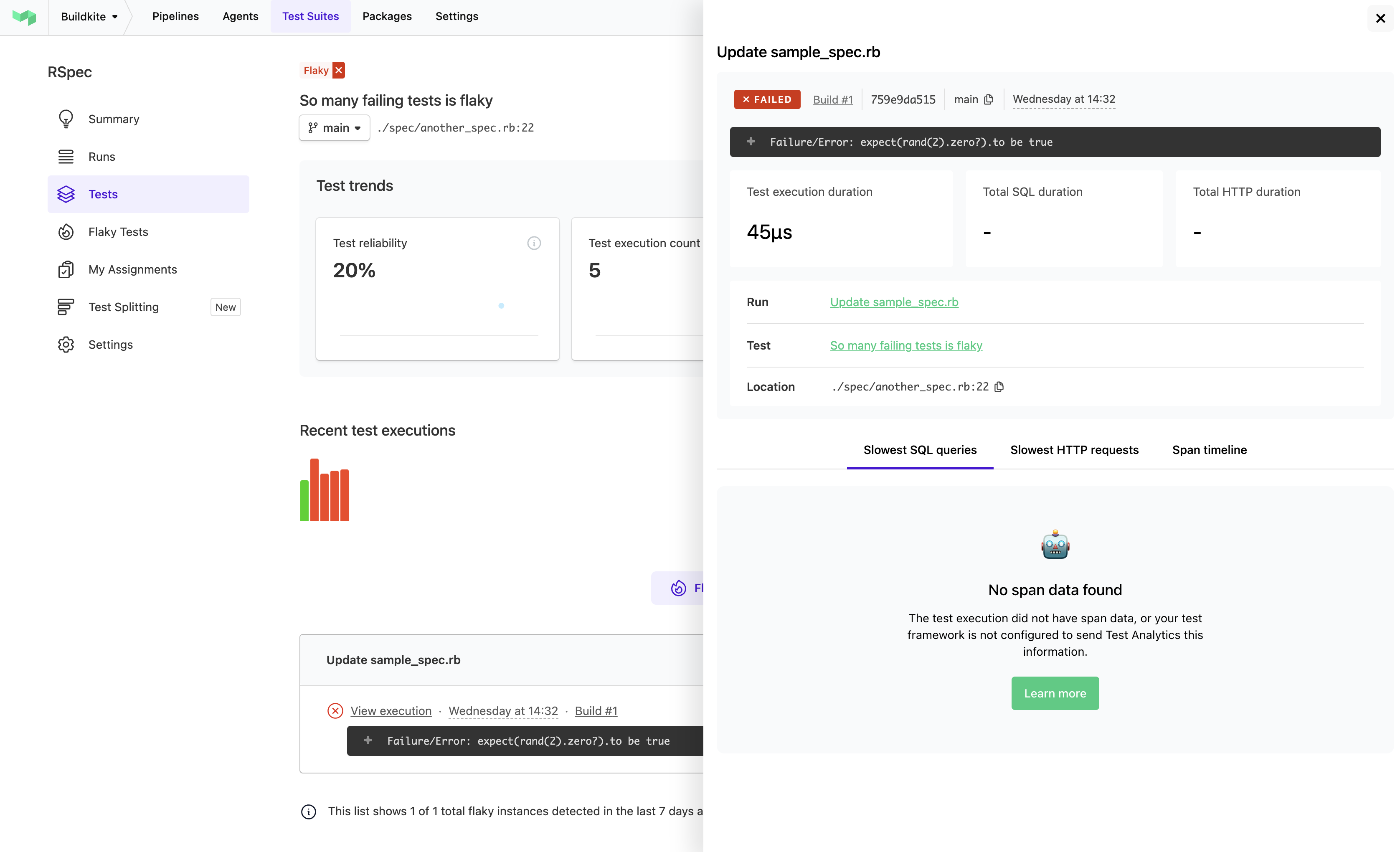
Meghan
Test digest on build page
Pipelines with at least one Test Suite associated have a new Test Digest tab on build pages. This tab displays detailed information about tests that failed during the build runtime.
Legitimate failures are prioritized and listed at the top of the digest, highlighting tests likely affected by the recent code changes on the branch being built.
Tests that flaked during the build are clearly labeled for easy identification.
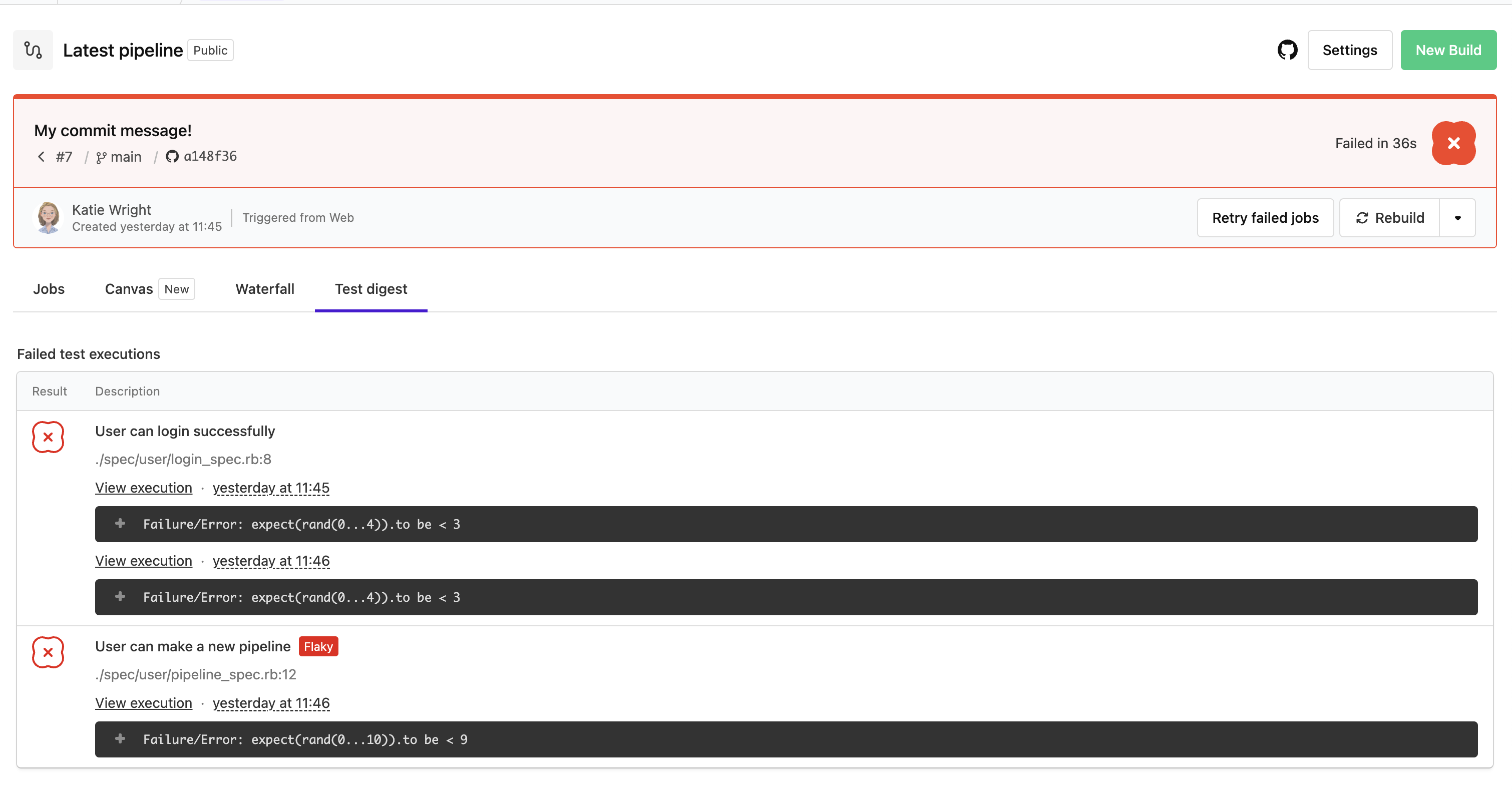
Katie
Disable public pipeline creation
Organization admins can now disable public pipeline creation for all organization members.

Public pipeline creation is enabled by default.
Disable public pipeline creation
Navigate to your organization settings by selecting 'Settings' in the top nav. In the side nav, under 'Pipelines', select 'Settings'. In the 'Public Pipelines' section, select 'Disable Public Pipeline Creation', and confirm in the dialog box.
Once public pipeline creation is disabled, options to make pipelines public are hidden from the Buildkite UI. If a user attempts to create a public pipeline via our API, an error will be returned.
Disabling public pipeline creation will not affect existing public pipelines - these will remain public, unless you explicitly change their visibility to private. Once this is done, their visibility cannot be made public again unless public pipeline creation is re-enabled.
Laura
Improved filtering for builds
We've improved filtering on the builds list to help you find builds quicker and easier.
We've made filters more discoverable by showing them in place at the top of the builds list, rather than hiding them away under a menu.
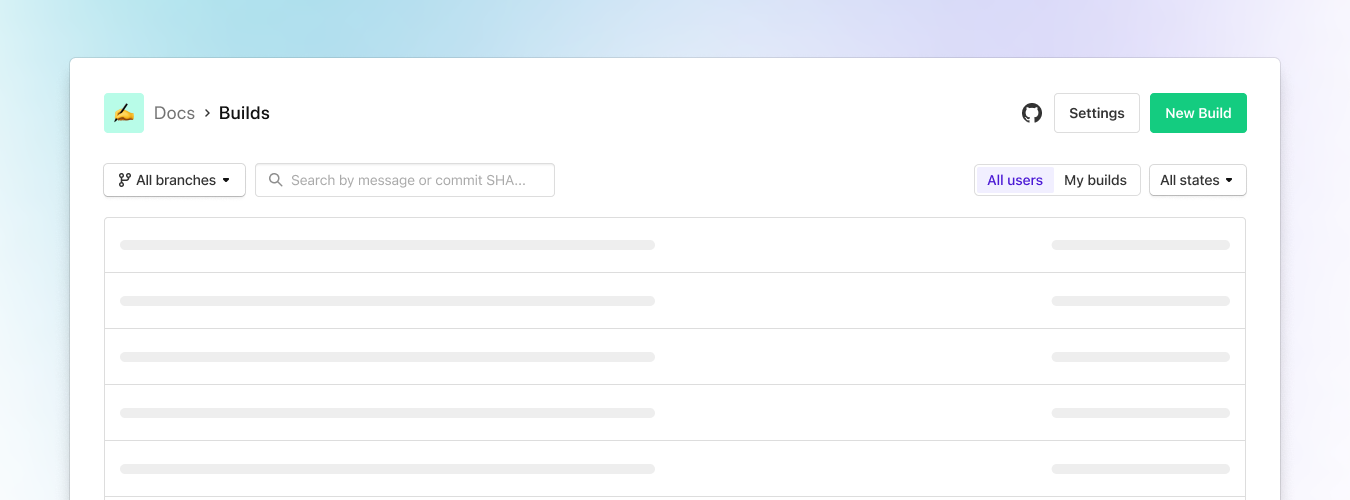
Filter by branch
The improved branch filter allows you to explore builds on any of your projects branches, and even search across multiple branches.
Start typing the name of your branch narrow down the list, and select the branch you want to see builds for.
Use a wildcard, like feature-*, to find builds across all matching branches.
The current branch is displayed in the breadcrumb navigation, so you can quickly jump back to all builds, or the pipeline overview.
Search by commit SHA or message
Using the new search filter, you can paste in a commit SHA to find associated builds. Short SHAs work too!
If you don’t have the SHA handy, just type part of the commit message, and we’ll show you matching builds.
View your builds
Easily switch between seeing all builds and just your own using the My Builds toggle.
Filter by state
Narrow down your search to include only builds that are running, passed, failed, or in any other state.
Angus
Test page header improvements
We have updated the test page to enhance your workflow with several new additions. You can now resolve and assign a flaky test to a team directly from the header.

Additionally, you can now view your test within your Git repository through a link in the header. To enable this feature, add your root Git repository URL in the suite settings page.
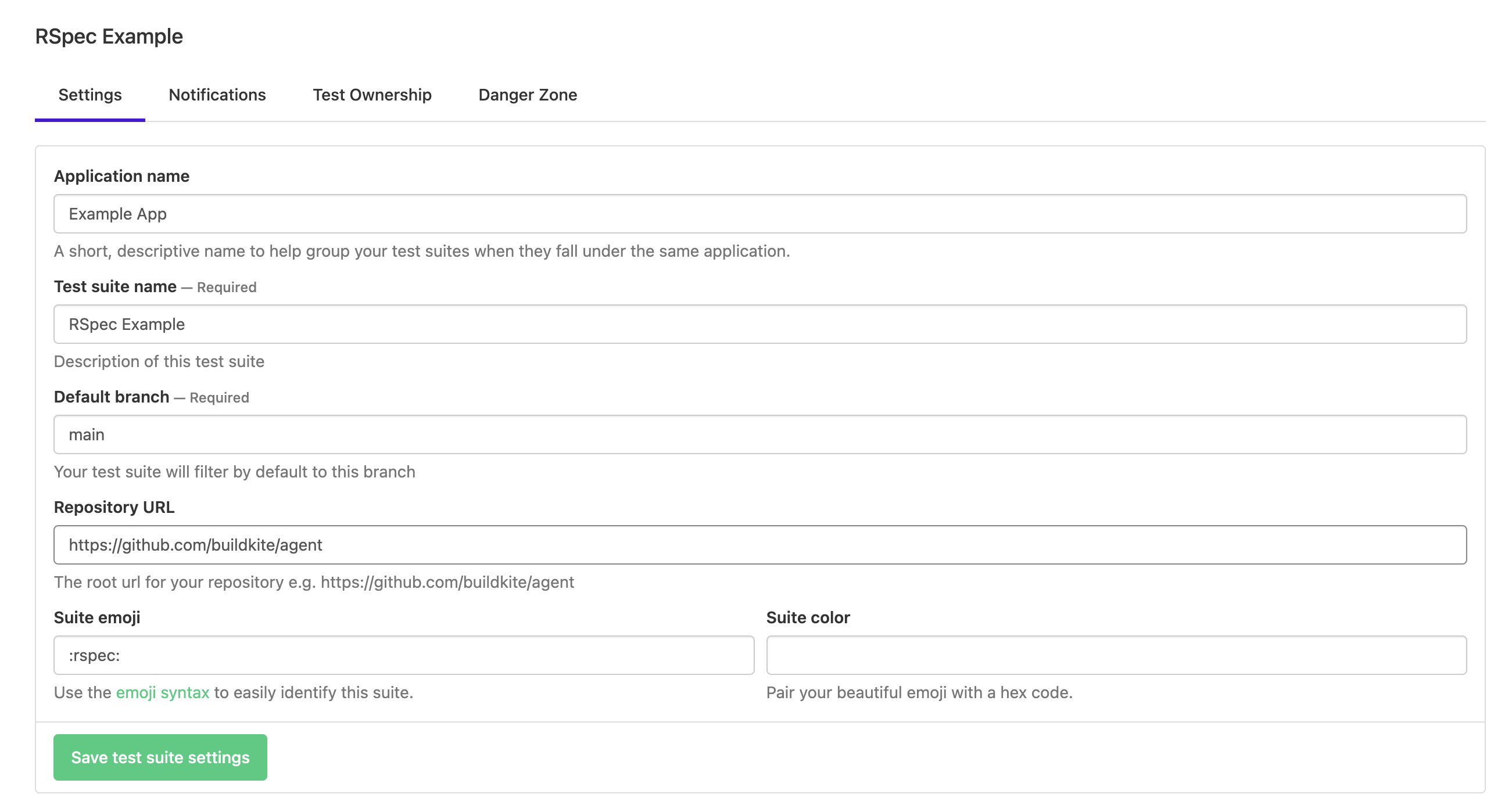
Meghan
IPv6 Support for the Buildkite API
We will be enabling IPv6 support for Buildkite's APIs on 2024-09-18. This includes api.buildkite.com, graphql.buildkite.com, and analytics-api.buildkite.com. If you have any clients consuming the Buildkite API while operating on a dual-stack network, it is important to check that any API Token IP allowlists, and any Organization API IP allowlists permit your IPv6 network ranges in preparation for the change.
Ellis
Better visibility for jobs waiting on concurrency groups
On the build page, jobs waiting on a concurrency group now show a list of the jobs ahead of them in the group.
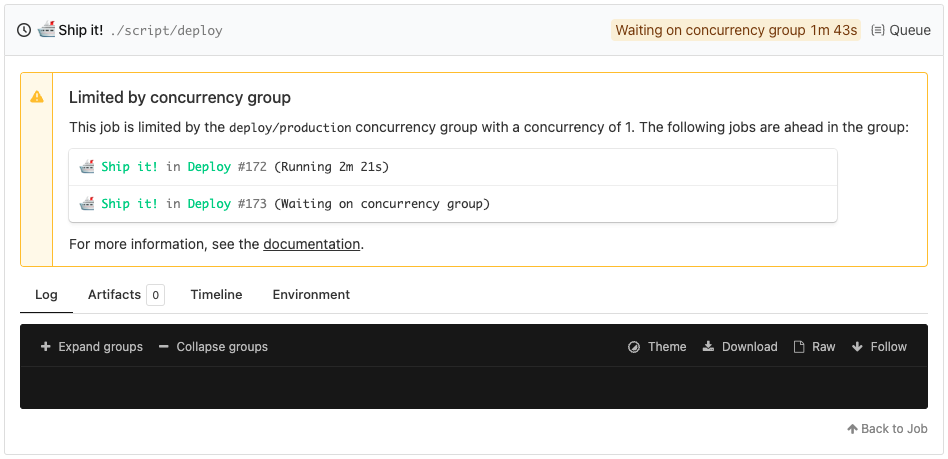
This list gives you visibility into how soon the current job might run and which jobs are backing up a concurrency group.
For more information on concurrency groups, see the documentation.
David
Unique flaky test metric
You can now view unique flaky test metrics on the suite summary page. This metric reflects the number of unique tests that have been flaky over a given period.

Meghan
Filter flaky tests by branch from the UI or API
You can now filter flaky tests by branch using the Test Analytics UI or API.
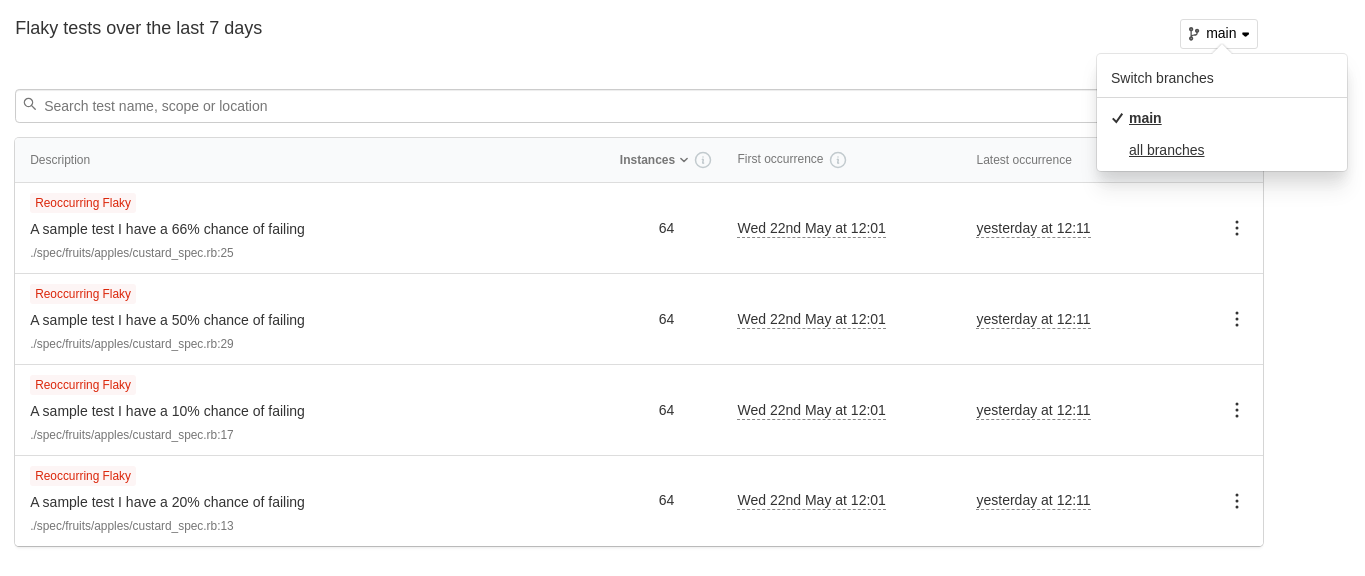
The filter will limit the list of flaky tests to those for which a flake has been detected one or more times on the selected branch.
To learn more, check out the API documentation.
Malcolm
Filter tests by owner
You can now filter your tests on the Test and Flaky test pages by owner.
owner:team-slugowner:team-slug-1,team-slug-2owner:none

Katie
Build canvas: A new way to visualize and understand your builds
You can now view your builds on an interactive canvas. The build canvas makes it easier to visualize your pipelines, understand running order and dependencies, and troubleshoot issues. It's available from the Canvas tab on build pages.
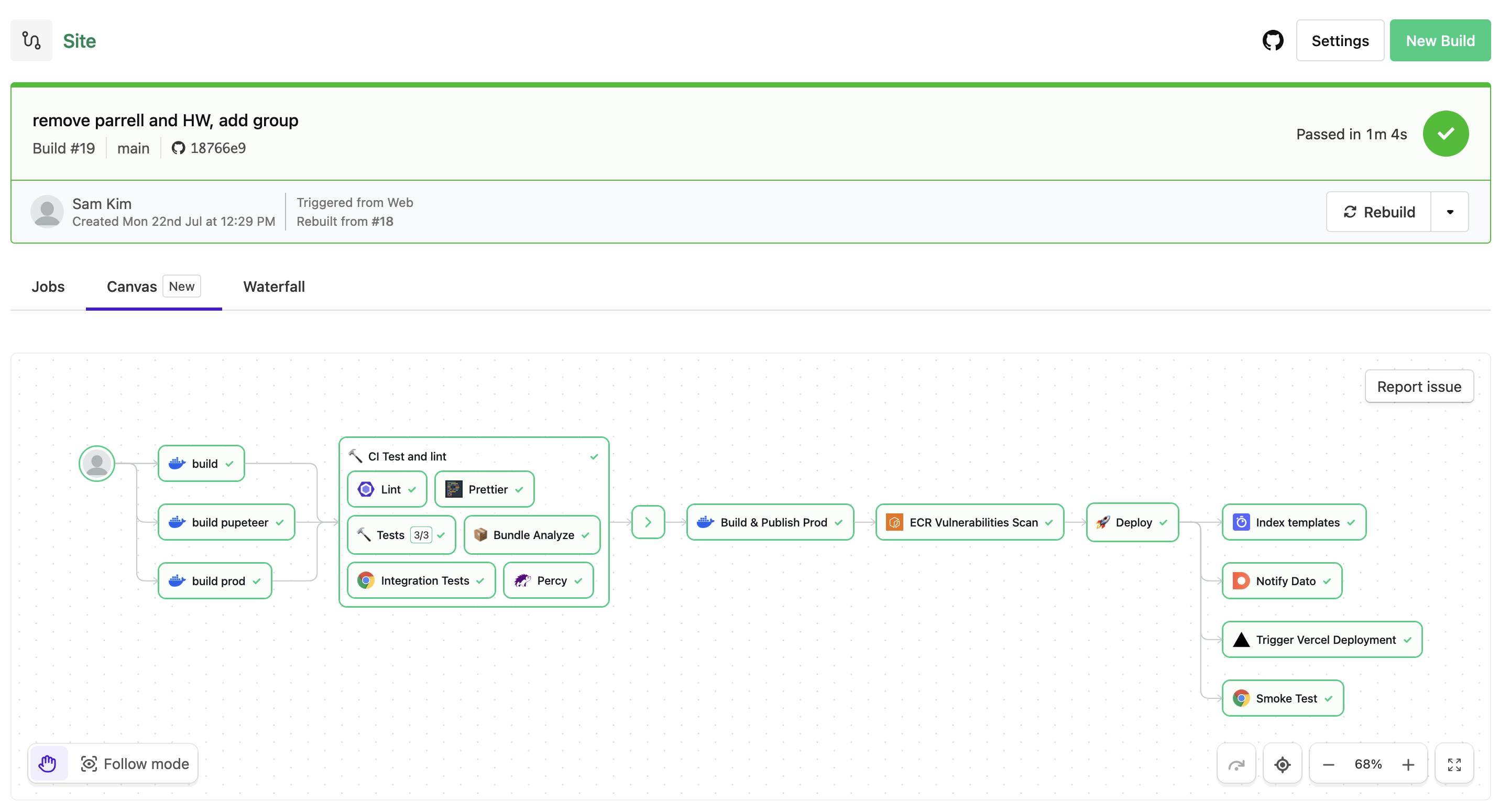
You can follow the progress of a running build by selecting Follow mode or pressing j:
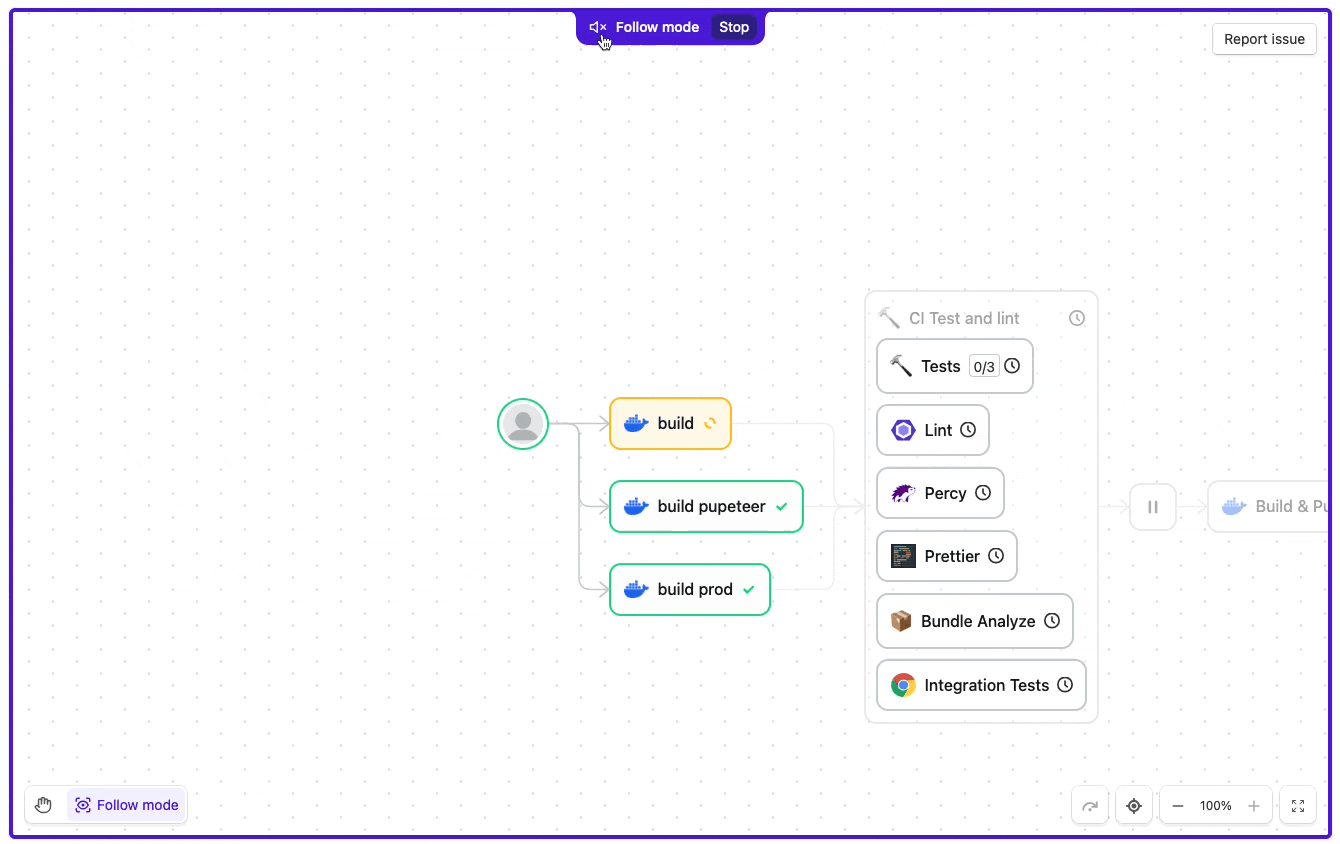
Troubleshoot and investigate failed jobs by selecting Go to failure or pressing f:
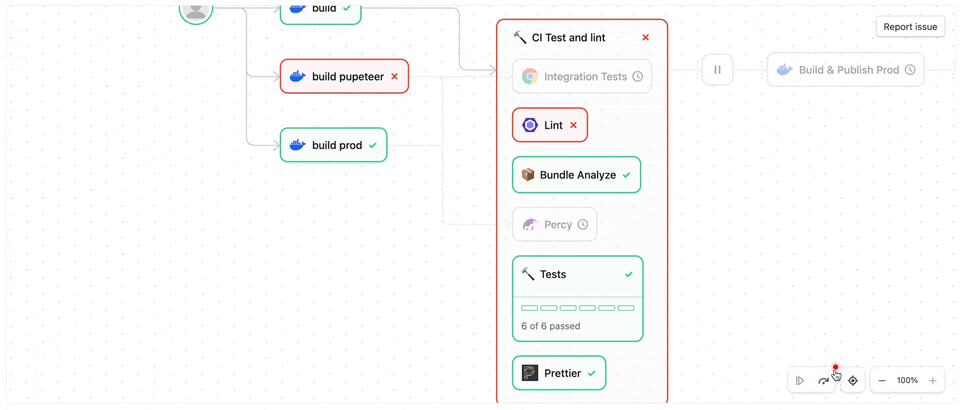
Hover over a step to see further details and navigate to the logs:
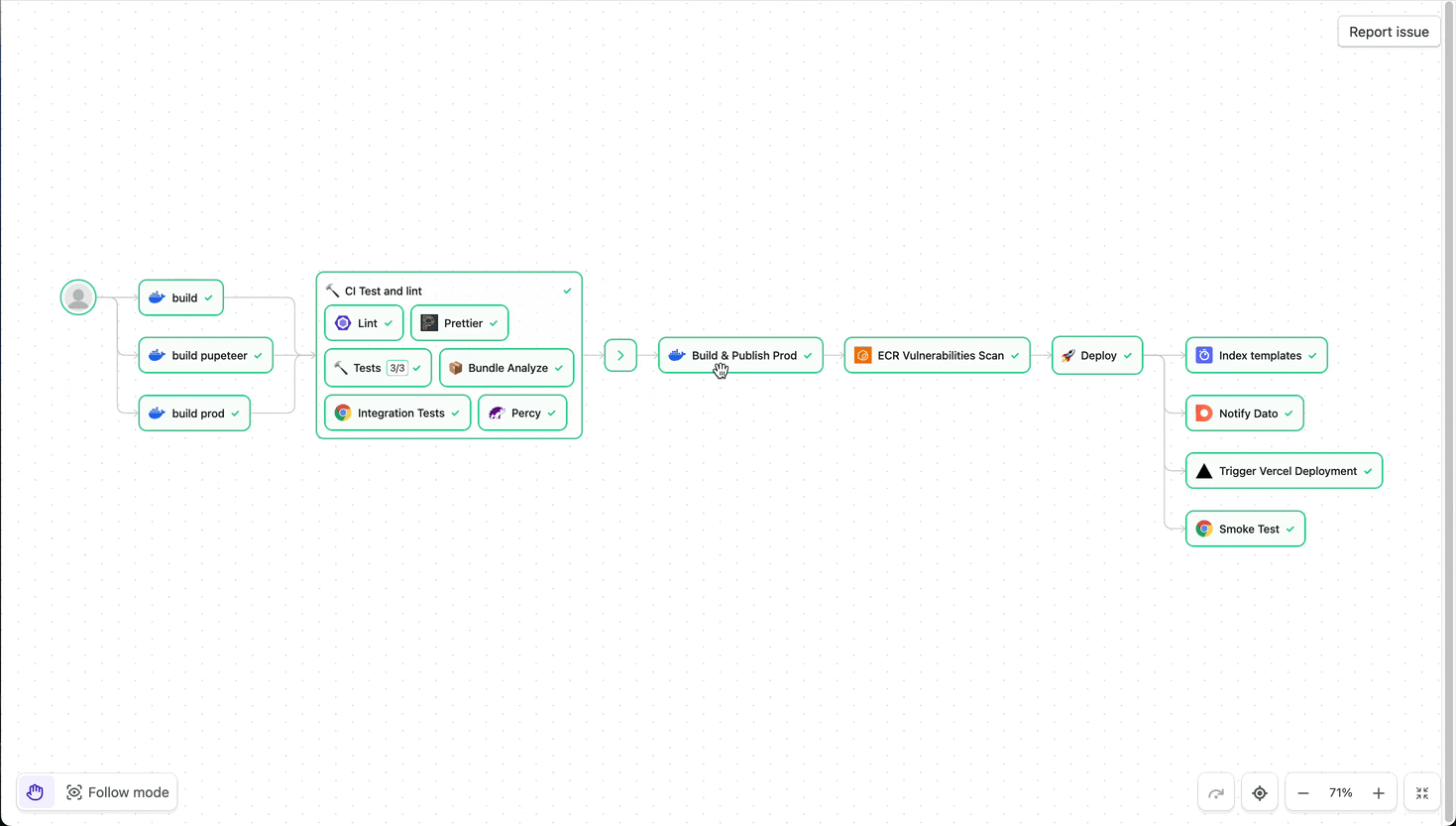
For all the information about the build canvas and a demo of the key features, see Visualize your CI/CD pipeline on a canvas.
If you have feedback or suggestions, please contact support.
Chris
Test suite search
You can now search for test suites by name or slug directly from the Suites page. This feature makes finding the suite you're looking for simpler, especially when you track many suites. Happy searching!
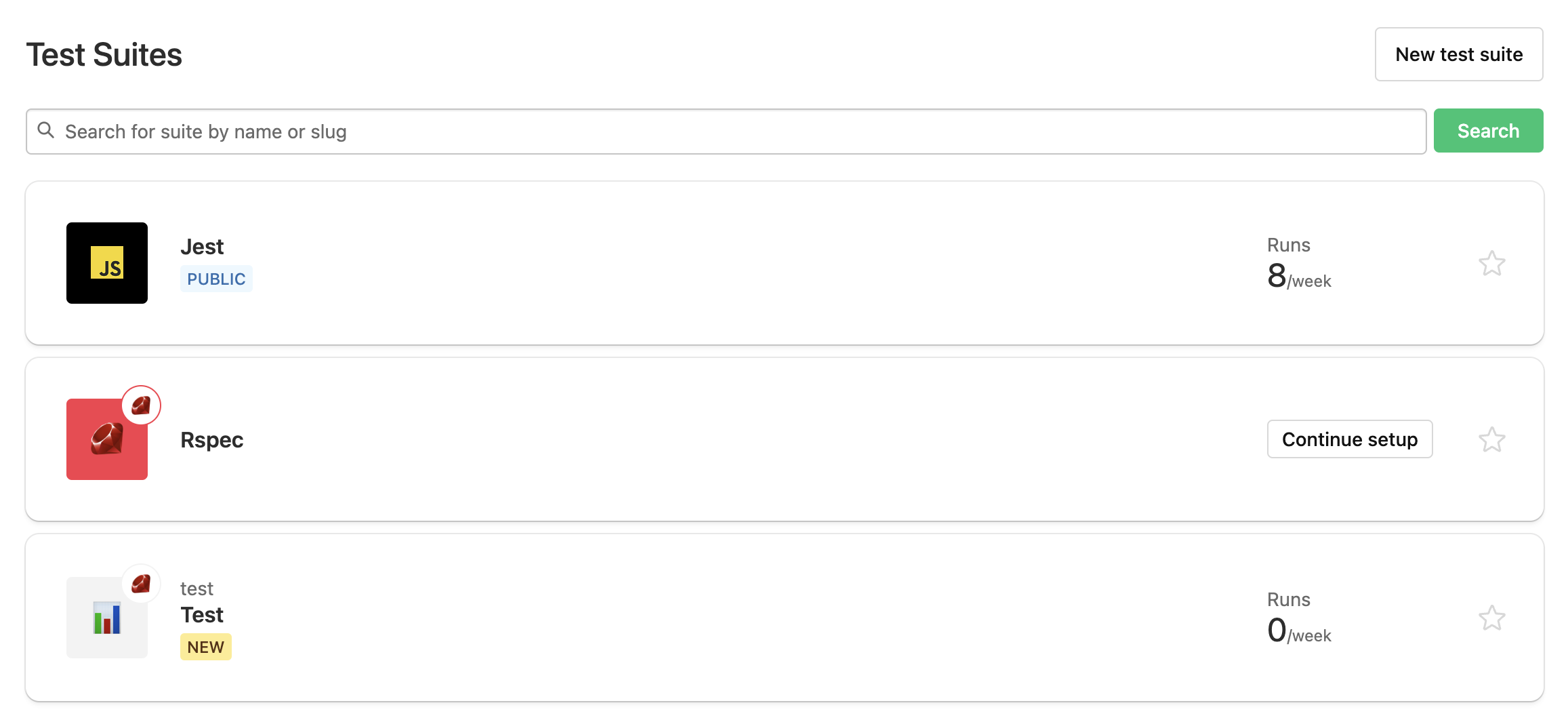
Katie
CLI v3 beta release
A new version of the Buildkite CLI (bk) is now available in beta. 🎉
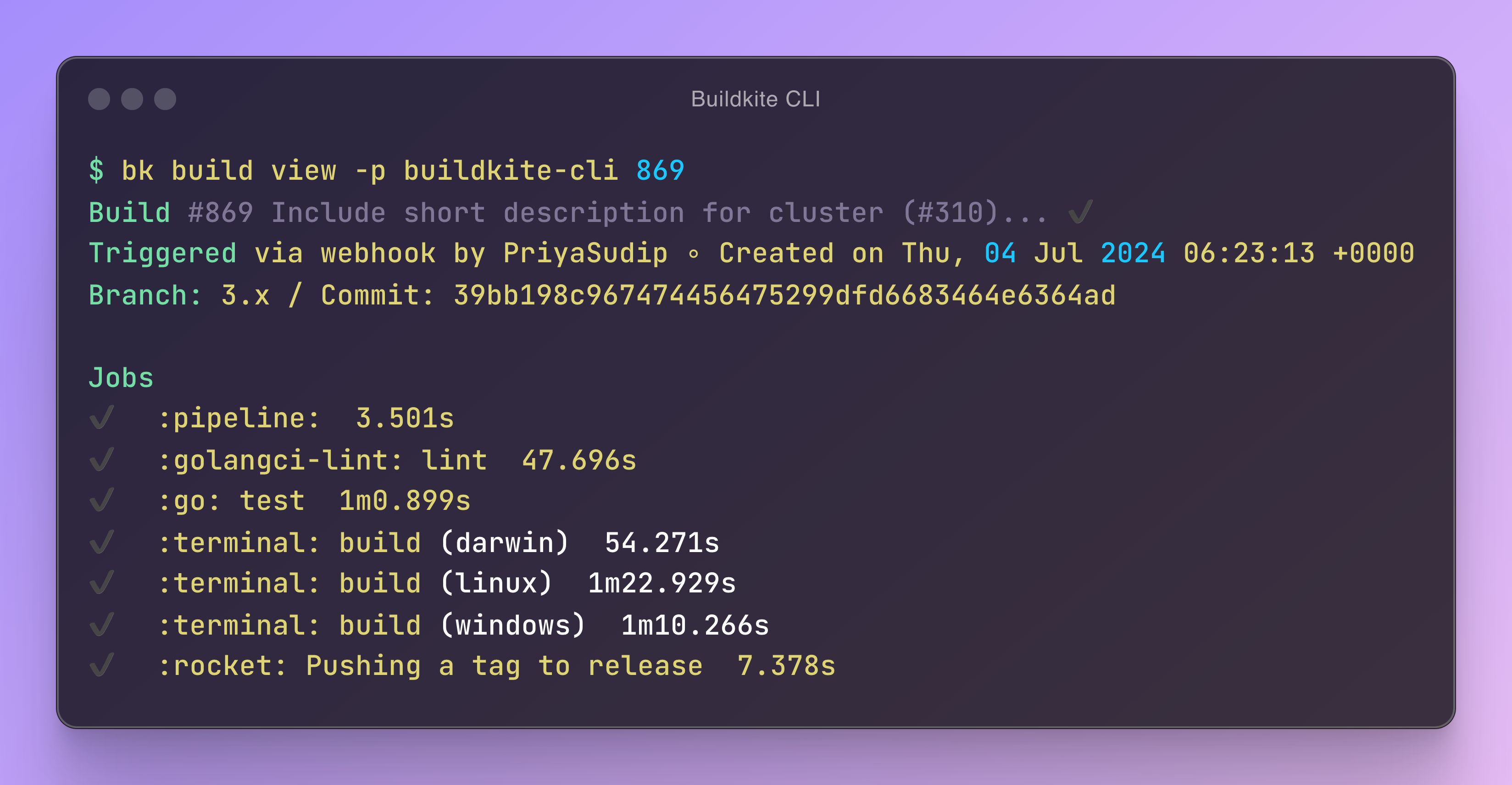
With bk, you can view, create, cancel, and unblock your builds from the command line. You can also stop agents in bulk.
For more details and installation instructions, see the documentation. If you have feedback or run into issues, please create a GitHub issue.
Jarryd
Weekly mailer summarizing flaky tests
Teams can now schedule a weekly email summarizing their most flaky tests for the last 7 days. This summary will only include flaky tests assigned to the selected team. Either manually assign flaky tests, or check out the test owners feature to automate this process.
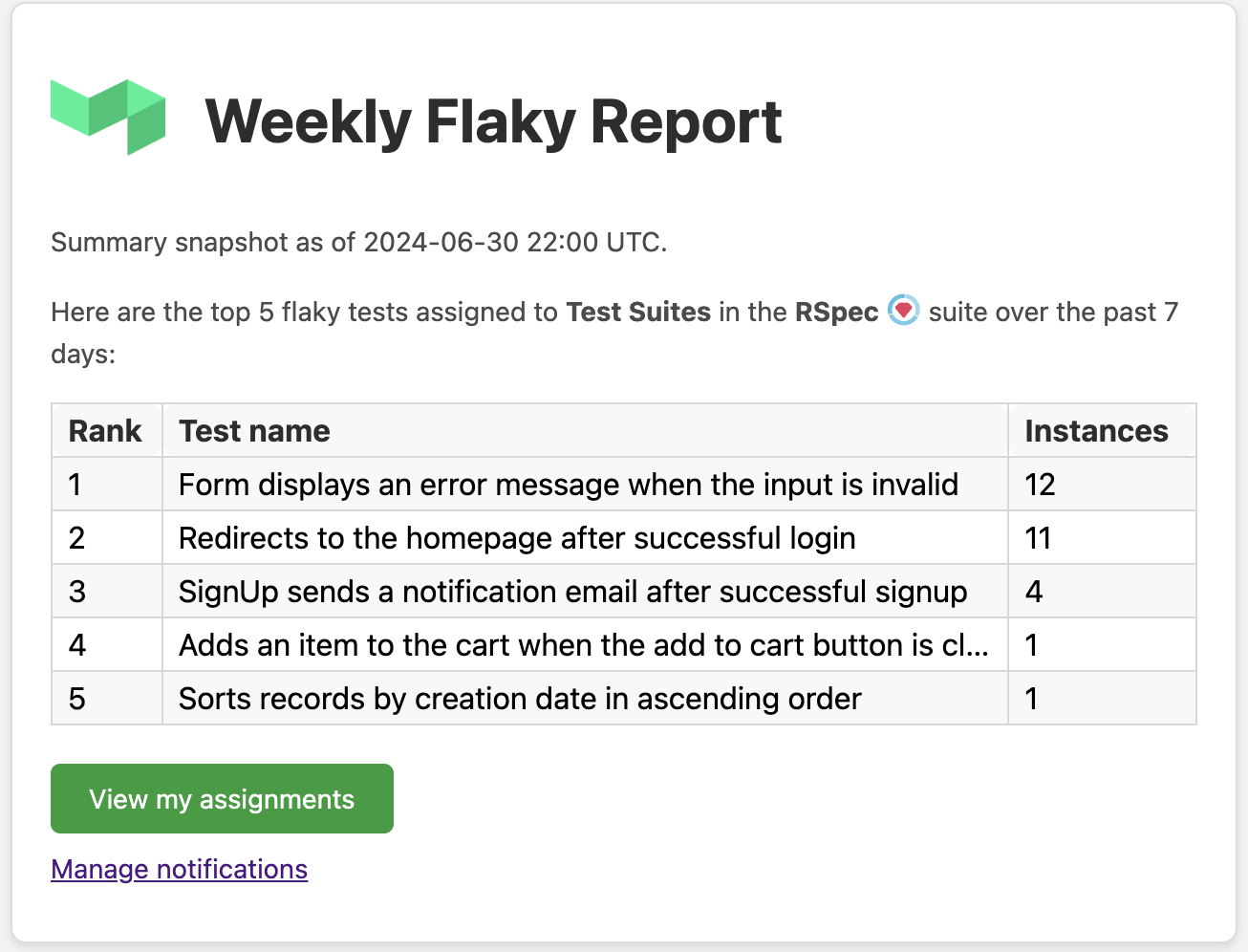
Users can create and manage these notifications from the suite settings page.
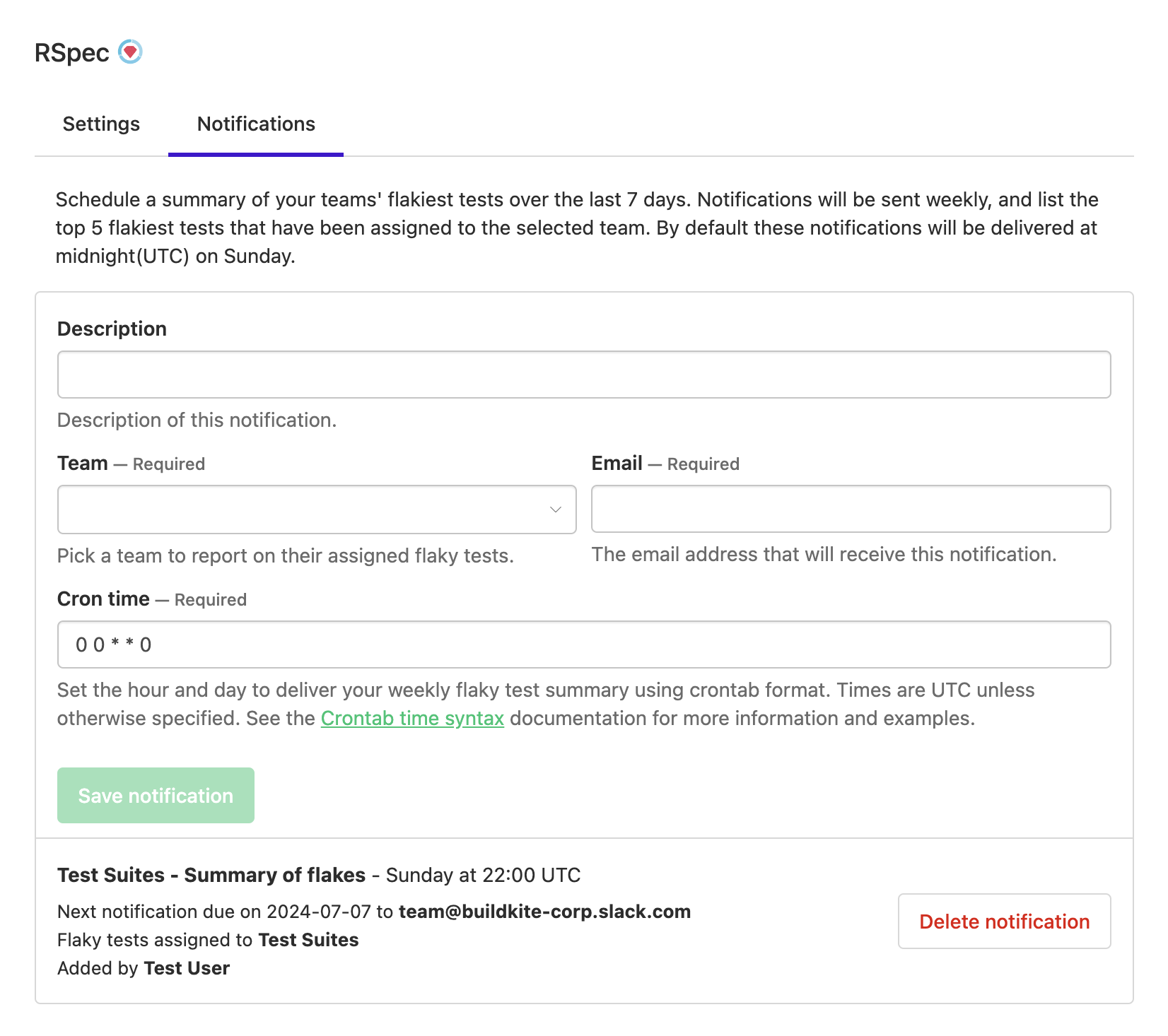
Katie
Start turning complexity into an advantage
Create an account to get started with a 30-day free trial. No credit card required.
